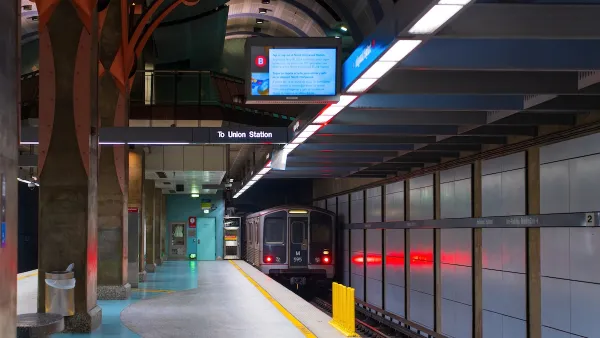Last Tuesday was a big day for me and an even bigger Earth Day for the City of Los Angeles. After 18 months of meetings, focus groups, workshops, conference calls, briefings, and a lot of collective putting together of heads the City Council unanimously passed a landmark green building ordinance. Three hours later it was signed into law by the Mayor.
Last Tuesday was a big day for me and an even bigger Earth Day for the City of Los Angeles. After 18 months of meetings, focus groups, workshops, conference calls, briefings, and a lot of collective putting together of heads the City Council unanimously passed a landmark green building ordinance. Three hours later it was signed into law by the Mayor.
Why is this a big deal? Because Los Angeles is a big complicated city and it is hard to get things done, especially quickly, in big complicated cities. So, for me, being able to create and sustain a collaborative process that wove together the hopes and desires of staff, elected officials, environmental advocates, and the business community is the real precedent setter. With the right issue, the right attitude, sustained commitment, and some momentum it really is possible to move the bureaucracy in a progressive green direction.
But, though its fun to bask in a day of collective accomplishment, the months and years ahead is when things get truly interesting. Starting November 1, all buildings of significant size - 150 a year - will be designed and built to green standards. With this sustained volume of projects it seems that, over time, the market will have no choice to transform and that standard practice will, well, have to rise to a new standard.
So what's next? Folding the green building program into the City's larger climate action plan and using green buildings as the catalyst for creating green neighborhoods.

Planetizen Federal Action Tracker
A weekly monitor of how Trump’s orders and actions are impacting planners and planning in America.

Map: Where Senate Republicans Want to Sell Your Public Lands
For public land advocates, the Senate Republicans’ proposal to sell millions of acres of public land in the West is “the biggest fight of their careers.”

Restaurant Patios Were a Pandemic Win — Why Were They so Hard to Keep?
Social distancing requirements and changes in travel patterns prompted cities to pilot new uses for street and sidewalk space. Then it got complicated.

Platform Pilsner: Vancouver Transit Agency Releases... a Beer?
TransLink will receive a portion of every sale of the four-pack.

Toronto Weighs Cheaper Transit, Parking Hikes for Major Events
Special event rates would take effect during large festivals, sports games and concerts to ‘discourage driving, manage congestion and free up space for transit.”

Berlin to Consider Car-Free Zone Larger Than Manhattan
The area bound by the 22-mile Ringbahn would still allow 12 uses of a private automobile per year per person, and several other exemptions.
Urban Design for Planners 1: Software Tools
This six-course series explores essential urban design concepts using open source software and equips planners with the tools they need to participate fully in the urban design process.
Planning for Universal Design
Learn the tools for implementing Universal Design in planning regulations.
Heyer Gruel & Associates PA
JM Goldson LLC
Custer County Colorado
City of Camden Redevelopment Agency
City of Astoria
Transportation Research & Education Center (TREC) at Portland State University
Camden Redevelopment Agency
City of Claremont
Municipality of Princeton (NJ)





























